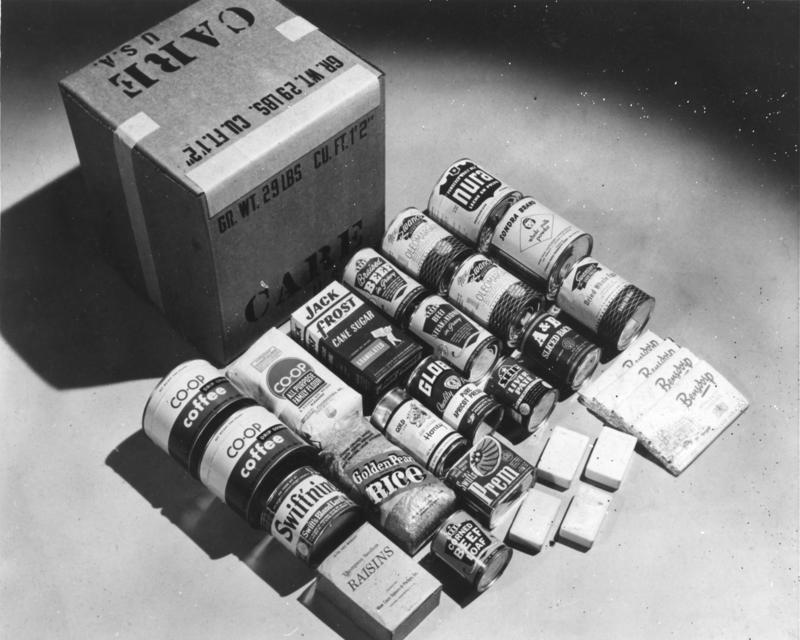Word With a Past: Care Packages
When World War II ended, Europe faced a serious food crisis. Millions of people had suffered from malnutrition during World War II.* Cities were destroyed. Agricultural areas were not only ravaged by troop movements, but tainted by the remains of the dead and dying. (In the Falaise Pocket, for instance, it was two years before people could plant crops in the fields because the ground water was polluted with the remains of men and horses. )
The Marshall Plan was designed to help Europe rebuild, but it didn’t deal with immediate need on an individual level.
In November, 1945, seven months after the war ended in Europe and two months after it ended in the Pacific, Arthur Ringwald and Dr. Lincoln Clark worked with 22 American charitable organizations to create a non-profit corporation to send food packages to Europe.** Alice Clark suggested they call it “Cooperative for American Remittances to Europe”: C.A.R.E.
The first C.A.R.E. packages were surplus rations that the U.S. military had been stockpiling in anticipation of invading Japan. C.A.R.E. acquired 2.8 million surplus rations known as “10-in-1”—designed to feed ten men for one day. These boxes included not only canned meats, egg powder and dried milk, but items like coffee, chocolate and sugar which were luxury items to starved Europeans. (Among which we must include the British, who were better off than most of Europe but continued to suffer from shortages as late as 1945.)
The first 15,000 C.A.RE. packages arrived in the French port of La Havre on May 11, 1946—almost exactly a year after V-E Day. By the end of 1946, C.A.R.E was delivering packages in ten European countries. As the supply of rations began to dwindle, C.A.R.E partnered with American food companies to fill its boxes. Americans could send a package to individuals or families for $10. At first the recipients of packages were family and friends of the senders; as the program grew more popular, the organization began to get orders for recipients such as “a hungry occupant of a thatched cottage.”
CARE still exists—the E now stands for everywhere. It still works to eradicate hunger and child malnutritions. But it no longer delivers individual packages to those in need.
For millions of families, C.A.R.E packages were literal life savers in the years after the war, a gift of both food and hope. By the time I was in college, and probably earlier, C.A.R.E packages had evolved into care packages—not quite the same thing but still sent as a token of love and, well, care.***
*An estimated 20 million people died of malnutrition during the war: more than died in combat.
** Herbert Hoover led a similar movement after the first World War. Yes, Herbert Hoover.
***My personal favorite was a package I received long after college. One winter in my late twenties or earlier thirties, I received a box of paperback novels from my parents when I was down with pneumonia. Food for the soul.





